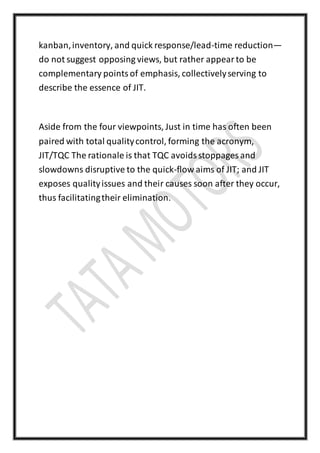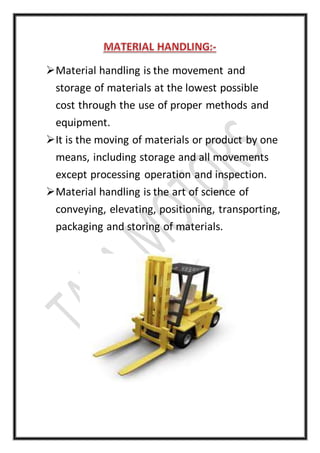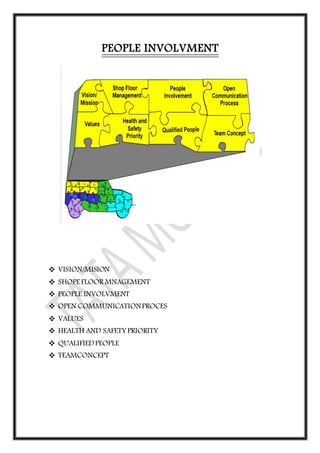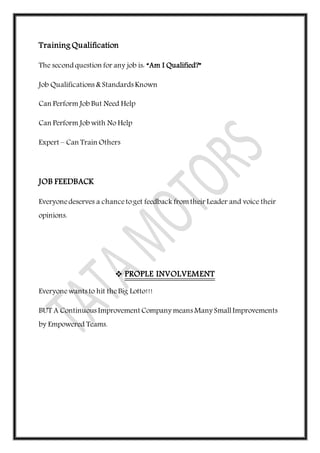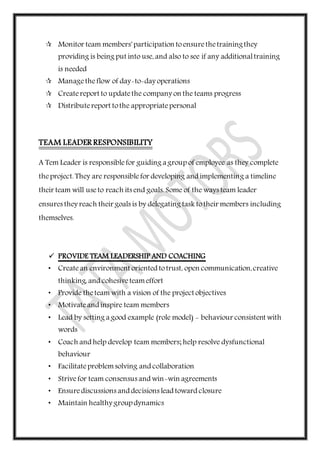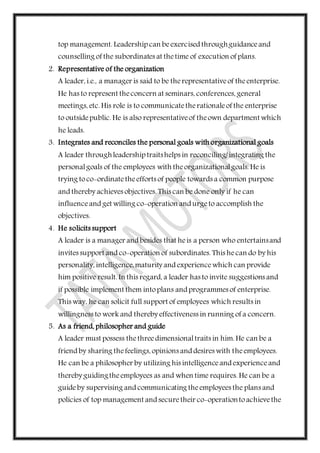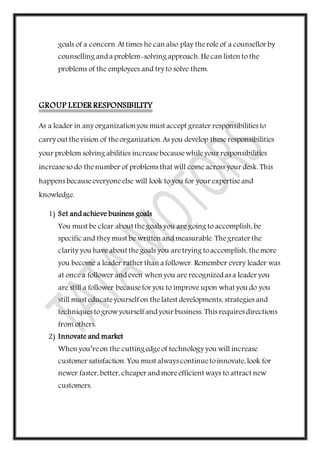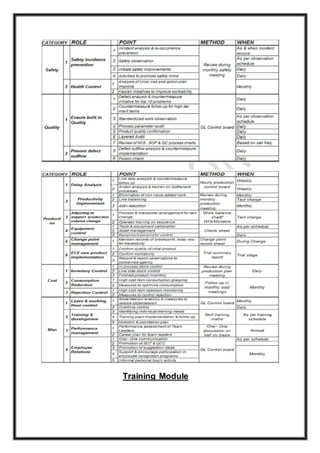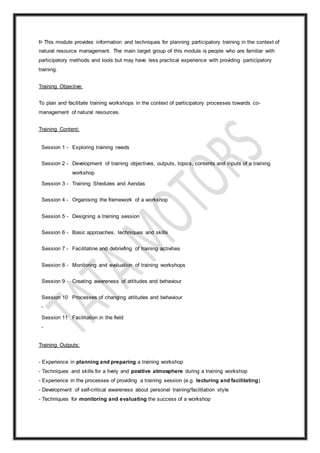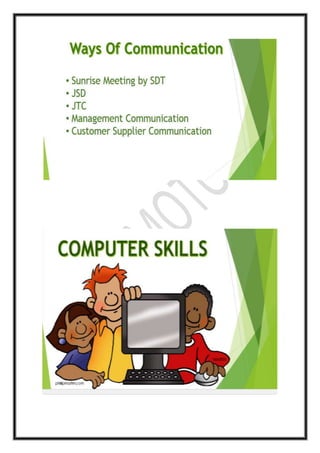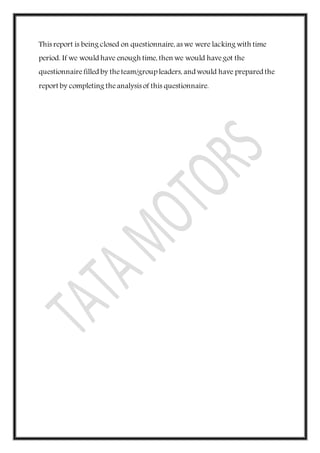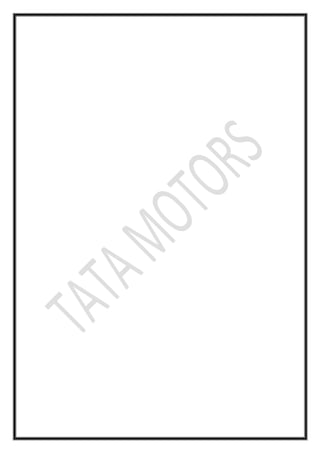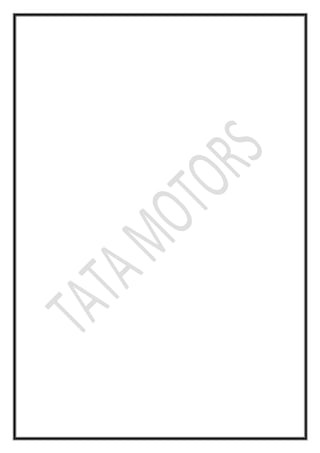This document is a project report submitted by Neha Shukla to Tata Motors Ltd. in Lucknow, India from June 9th to July 17th, 2015 under the guidance of Mr. Alok Arora. It includes an introduction to Tata Motors, describing its various products and subsidiaries. It also provides details about the history of Tata Motors and its joint ventures, as well as information about the Tata Motors plant in Lucknow, including its divisions of Assembly, Training, and Manufacturing.
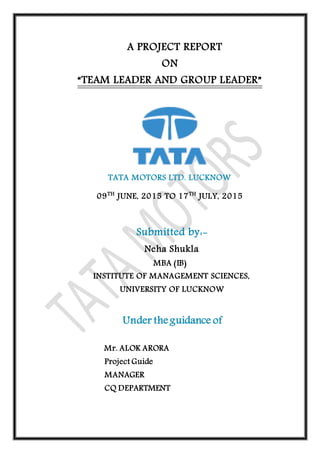







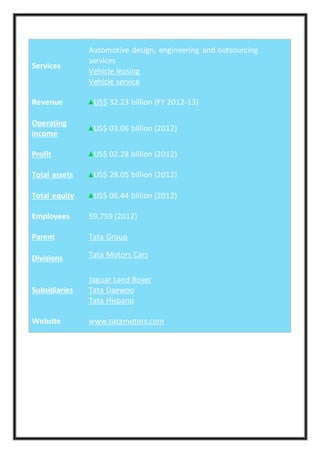



















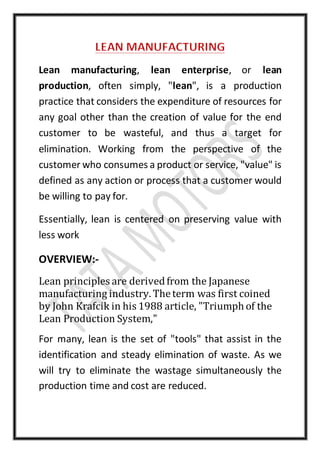
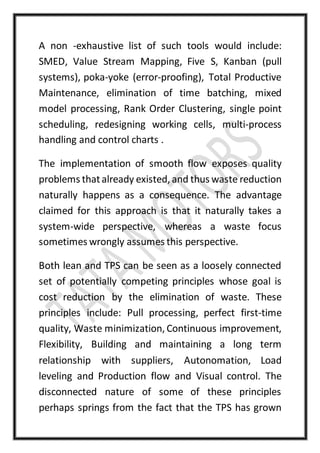
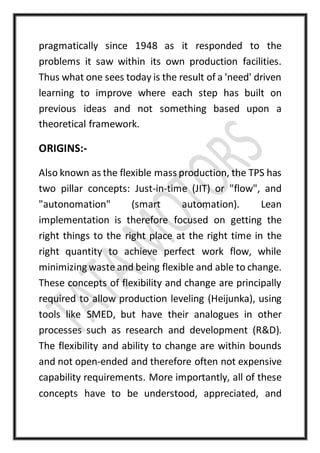


![JUST IN TIME
The nature of just-in-time, meaning JIT
manufacturing/production orJIT in any other setting (e.g.,
administration),may be reduced to four somewhat
differently stated views.
Many have said that JIT revolves around wastes: "At its core,
JIT is a waste-eliminationphilosophy. . . Among the earliest
writings on the matter, Shingo lists, as the "7 wastes," the
wastes of: over-production,waiting, transportation,
processing itself, stocks [inventories], motion, and making
defective products Others have equatedJIT production
with Kanban. For example, one book hasboth Kanban and
just-in-time in its main title.
Still others assert that JIT's main aim is eliminationof
inventories, althoughMurray maintainsthat "JIT is defined as
'NOT an inventory control system--but a way of thinking,
working and management to eliminatewastes in the
manufacturing process'. In keeping with that view, JIT
manufacturing has often been referred to in contrast to the](https://image.slidesharecdn.com/f48db89d-f449-4be6-9b98-ceadabf7a955-150717065931-lva1-app6891/85/Project-Report-34-320.jpg)

